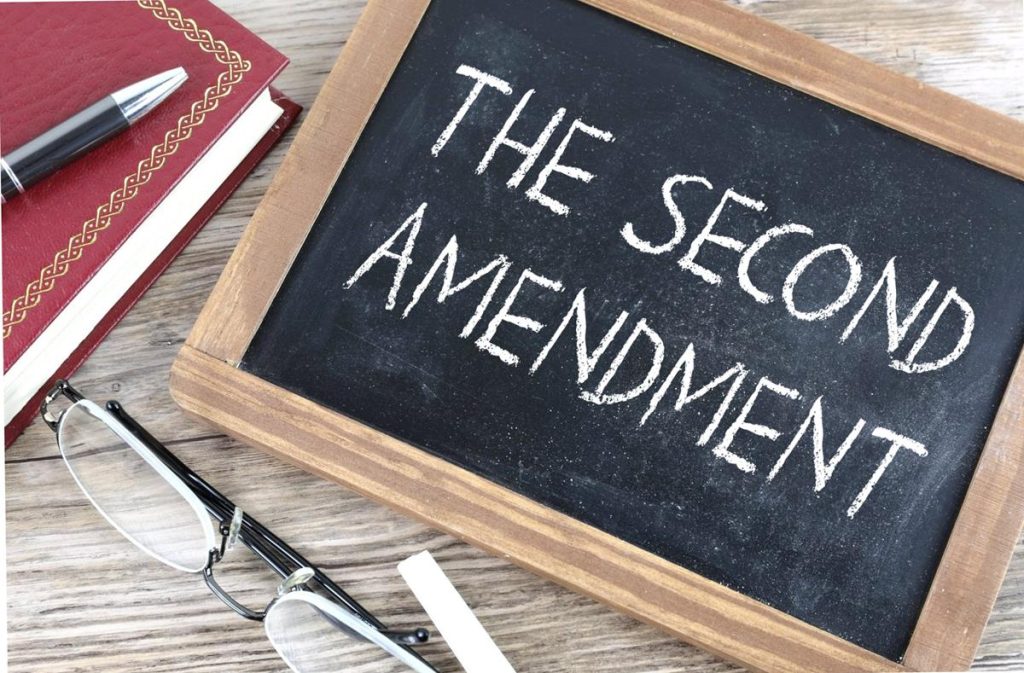
Image Credit: Alpha Stock Images – Nick Youngson – The Second Amendment
By Saul Roth
Most of these laws allowed for some kind of personal possession in the home or regulated possession outside of the home. But still, their main theme was going back to the right of bearing arms and that the right had to be for participation in the militia at the current time or in the future. Most of these laws were also passed in the South. The Civil War had recently concluded, so the judges in these cases were now well aware of what insurrection and rebellion meant. I believe they were more experienced in the meaning of the Second Amendment than other judges would be in the future. Although not documented, it is also possible the South was concerned about former slaves’ obtaining guns during Reconstruction . At the same time, whites would not have guns to protect themselves against their former slaves.
As to the geographical difference during the same era, the Idaho Supreme Court struck down a law prohibiting gun carry in cities, and the Vermont Supreme Court struck down a law on the prohibition of concealed carry possession. This decision took place at the turn of the 18th century (O’Shea, 2012).
The courts began to look at the 2nd Amendment in a different manner from the 1930s to the present. The courts’ interpretations may have started to change because of the advancement in weapons. Machine guns became prevalent, and the courts took notice. Congressional action came first when Congress passed The National Firearms Act in 1934. This law created high taxes and difficult registration requirements for machine guns, silencers, and some short-barreled guns. In 1939, the U.S. Supreme Court issued a landmark decision which I believe is the opposite of how it had interpreted the Second Amendment prior to this ruling. In U.S. v. Miller the court reversed a lower court ruling and reinstated a conviction for possession of a sawed off shotgun. The Court opined that possession of a weapon had to be related to a well-regulated militia, and a sawed off shotgun had no place in a militia. (O’ Shea, 2012)
This ruling interpreted the Second Amendment the same way I do. But it’s troubling that the Court in this modern era is even considering private persons as being in training for a militia. By this time in history, there was an organized national force and a state National Guard. Citizens were not training at home for military service. This decision stood in the U.S. Supreme Court as its major decision on the Second Amendment for about sixty years. For that whole time states would continue to make their own interpretations of the amendment for their own states. Illinois had one of the toughest laws with the right to bear arms illegal except for the police. The Rhode Island Supreme Court in Mosby v. Devine decided that the right to bear arms was only for those with an affiliation with an armed militia. Yet despite all these court’ rulings, thirty states now still have laws’ stating the right to bear arms is for self-defense. These states regulate this right in many different ways. The National Firearms Act of 1934 in response to the St. Valentine’s Massacre and the subsequent U.S. v. Miller decision of 1939 was to stand for almost seventy years. Then on March 18, 2008, The U.S. Supreme Court heard arguments on the case of District of Columbia (DC) v. Heller. The DC law regulated all types of gun possession. The Court specifically declared that the law was unconstitutional in that it did not allow a functional gun in the home for self-defense. In this ruling, the Court now for the first time indicated that the 2nd Amendment gave the citizens the right to bear arms for self-defense that was not related to any service in the militia.

Recent Comments